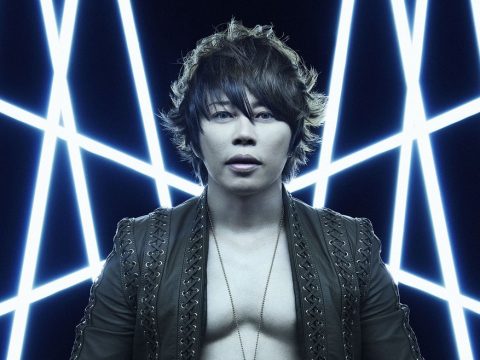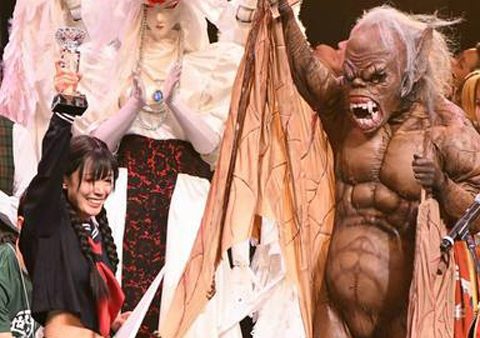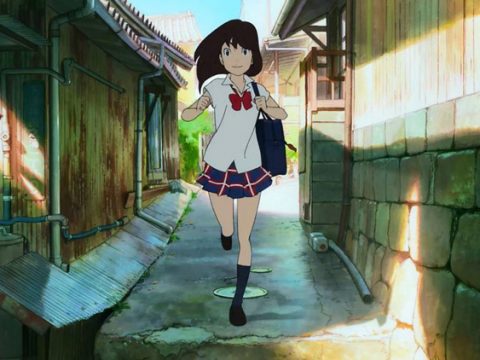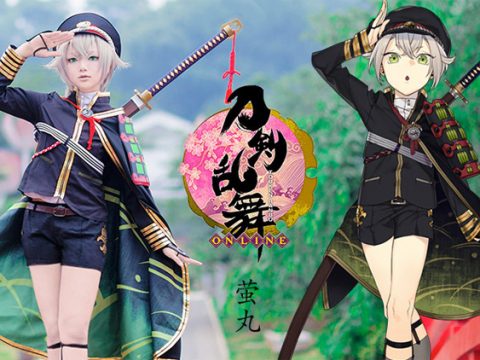Mention the word “Cosplay” in the US, and the image tends to be one of perky teens in various states of dress (and undress) crowding up already-congested convention center halls as geeks of various shapes and sizes snap their little cameras away. Sometimes they even try for a flirt, to varying degrees of failure.
Japan, like in most other things, is the same but different. At massive events like Comiket, cosplayers are relegated to their own zone and photography outside designated zones is expressly prohibited. The average age is also decidedly higher, university students with extra free time far outnumbering squealing high schoolers. It’s a far mellower affair but much busier, with crowds in the tens of thousands and security constantly breaking up mobs that get too crowded.
However, as anyone who’s seen gals clad in frilly Victorian dresses rubbing elbows with businessmen on the train would know, getting gaudy is not necessarily restricted to the conventions here in the motherland.
Indeed, cosplay events are a relatively common occurrence compared to the deprived, economically downtrodden folks on the other side of the pond. A search on a site such as ketto.com reveals several events occurring on any given weekend around the country. While some are genre-specific, focusing on yaoi pairings, Vocaloids, or full-blown Kamen Rider re-enactments (in my dreams), most tend to be open-ended, accepting all series, costumes – and cameras.
Perhaps it’s only natural that the first small-scale cosplay event your intrepid reporter explored was in Akihabara. Our readers may not need to be told that Akiba is a place that has long lost her glory since the massacre of 2008 permanently closed the Main Street to pedestrian traffic, but it bears repeating in order to grasp the serendipity of it all.
The semi-weekly Imageo Cosplay Event was this time located in a drab building simply called something that roughly translates to “Tokyo City Small Enterprise Public Meeting Hall.” Mouthful aside, its unassuming exterior brought back that childhood sense of discovery. It was close enough to the famed Electric Town Exit but in the opposite direction of all the chirping maids passing out flyers for some café that will most likely vanish in a few months. Poor lost souls.
A small, barely noticeable sign simply lead to a different floor in the building, the vaguely audible sound of chatter and flashes popping being the only hint of what was inside. An elevator ride and a reasonable 1500 yen fee later then it was off to the races.
At less than fifty people with little over a half-dozen mini photo-sets, it was as far a cry from the organized chaos of Comiket as one could get. Instead of the gang-war of photographers lunging their lenses on a lass like wolves around a wounded deer, it reminded of that scene in Singin’ in the Rain when Fred Astaire is walking past all of the silent movie sets. There, it was the Western shoot-out being filmed right next to the love scene which was shot next to the comedy, except here it’s the mock-camera-shy Miku Hatsune posing in one set while next to her is a sultry siren in a red faux-Goth dress vamping it up like it’s 1499.
And people line up for it. Literally. The more popular cosplayers have long queues formed up and, since these events are geared towards not rushing people, the more hardcore photographers take their sweet time getting their shots.
Perhaps it’s about getting your money’s worth. In fact, all of the photo-takers, man and woman alike, carry hundreds, if not thousands of dollars worth of camera gear with them. Even the most humble of cosplayers could be seen carrying a hefty Nikon or Canon DSLR instead of the lower-end compact models so often used for Facebook snapshots. While I’m loathe to ascribe things so glibly to culture, it’s tempting to view this as a reflection of the majime (serious-minded) mentality that is often celebrated here.
Of course, it’d be ludicrous to say that somehow one country’s Way of the Shutterbug is inherently better than the other. It’s apples-to-oranges. In the States, there is a stronger sense of easy camaraderie and doing the absurd just for the sake of it. On the other hand, in the land that Amateratsu built, it feels more like a job networking affair by way of firing range, even in the more intimate atmosphere of the public hall. The cosplayers, almost invariably female, hand out business cards with their Cure accounts in an effort to get more exposure. The photographers, for their part, hardly exchange a word to each other, instead focusing on blasting their flash strobes and adjusting their reflectors to get that perfect shot. Majime at its best.
Fernando Ramos is a Japan correspondent for Otaku USA. A fan of all things Japan since fatefully renting Project A-Ko at the tender age of 12, he finally managed to pack his bags and move to the Saitama area in 2008, where he has been living ever since and not yet regretted it. He also is Editor-in-Chief of Anime3000.com and screenwriter for the tokusatsu webseries Battle Hero Absolute. His other photography can be seen at his flickr site.







